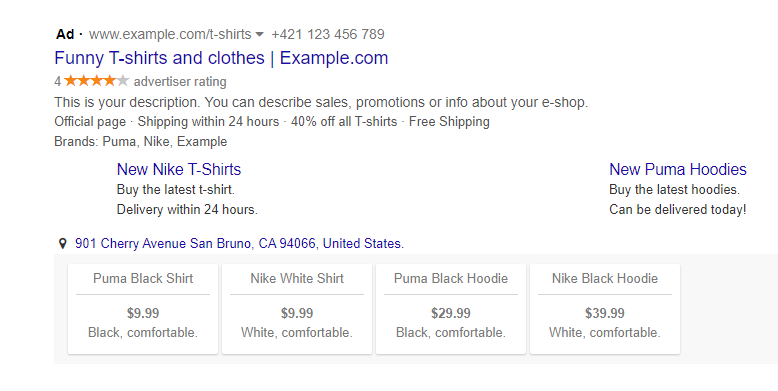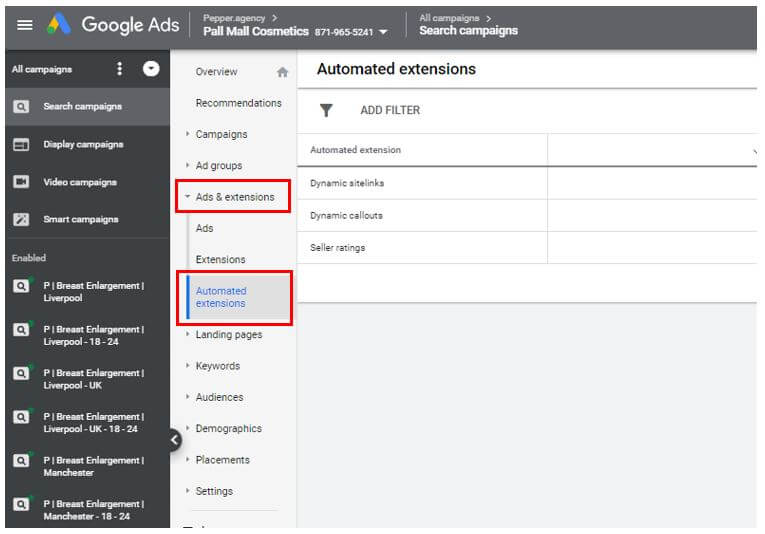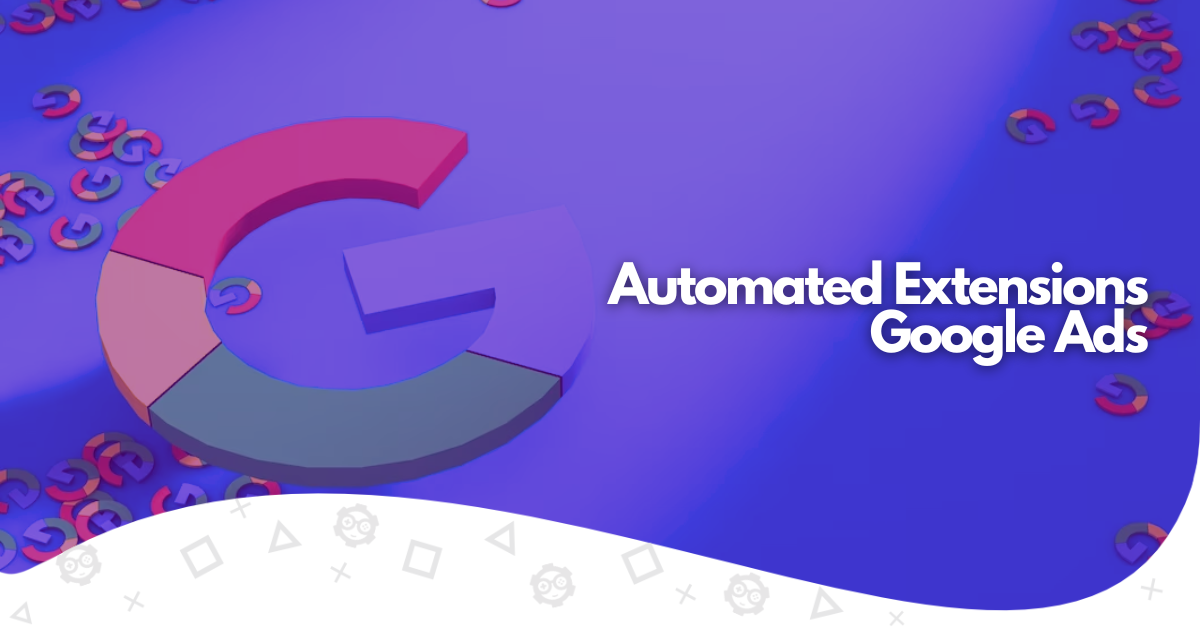In the dynamic world of online advertising, Google Ads stands as a towering presence, offering many tools to boost the visibility and efficacy of your digital campaigns. Among these powerful features are Google Ads extensions, a significant yet often underutilized component.
This article will delve into automated extensions in Google Ads, contrasting them with manual extensions and unraveling their role in optimizing ad campaigns. We’ll explore the nuances of automated ad extensions, structured snippet extensions, and the intricate mechanics behind Google’s machine-learning algorithm that drives these extensions. Whether you’re a seasoned advertiser or new to the scene, understanding automated extension eligibility and its impact on your campaigns is crucial.
What are Automated Extensions?

Automated extensions in Google Ads represent a sophisticated, AI-driven feature to enhance and optimize digital advertising efforts. These extensions are a type of ad extension. Still, unlike their manual counterparts, they are generated and implemented by Google’s machine-learning algorithm without needing direct input or management from the advertiser. This technology aims to improve the performance of ads by adding relevant, additional information that could potentially increase the ad’s click-through rate (CTR) and overall effectiveness.
Types of Automated Extensions

Call Extensions: Display your business phone number, allowing potential customers to reach you directly.
Sitelink Extensions: Provide links to specific pages on your website, guiding users directly to the most relevant information.
Structured Snipped Extensions: Highlight specific aspects of your products or services, such as categories or types.
Location Extensions: Automatically show your business address, ideal for local businesses aiming to attract nearby customers.
Seller Ratings: Showcase reviews and ratings from previous customers, building trust and credibility.
Price Extensions: Display prices of your products or services, giving users a clear idea of what to expect before they click.
Automated extensions in Google Ads offer a dynamic and intelligent approach to ad enhancement. They utilize Google’s advanced machine learning capabilities to enrich ads with valuable, contextually relevant information to improve user engagement and overall ad performance. This feature exemplifies the evolution of digital advertising, where automation and AI play pivotal roles in shaping how businesses connect with their potential customers.
How Automated Extensions Work

Automated extension in Google Ads functions through a blend of Google’s advanced machine learning algorithms and a deep analysis of various data points related to your ads and website. Here’s a closer look at their operational mechanism.
Data Analysis: Google’s algorithm begins by scrutinizing your ads’ content, your website’s structure, and the keywords you are targeting. It also considers user behavior and interaction patterns with your ads.
Contextual Relevance: The system then evaluates the context of each search query. For instance, if a user searches for a service you offer, Google might automatically add a call extension to make it easier for the user to contact your business.
Dynamic Adaptation: Automated extensions are not static. They adapt based on the performance data and the changes in user search behavior. This dynamic nature ensures that the extensions remain relevant and effective over time.
Predictive Performance: Using historical data, the algorithm predicts which extensions will likely improve your ad’s performance. It selects extensions that increase engagement, such as click-through rates and conversions.
Eligibility for Automated Extensions
Not all Google Ads accounts or campaigns will automatically have extensions added to them. Several factors influence the eligibility for automated extensions.
Historical Campaign Data: Google looks at your account history and performance metrics. A consistently well-performing ad campaign will likely be considered for automated extensions.
Quality and Quantity of Information: The amount and quality of information available about your business play a role. More detailed and high-quality content on your website can lead to more accurate and useful extensions.
Ad and Account Settings: Certain settings and configurations in your Google Ads account can impact eligibility. For instance, if you’ve already added manual extensions, Google might not overlay them with automated ones.
Performance Impact of Automated Extensions
Automated extensions can significantly influence the performance of your Google Ads campaigns.
Enhanced Visibility and Engagement: By providing additional, relevant information, these extensions can make your ads more appealing, leading to higher click-through rates.
Improved Ad Relevance: Extensions like structured snippets or site link extensions add more context to your ads, making them more relevant to users’ searches.
Cost-Effective: Since these extensions are automatically generated and managed, they provide an additional way to enhance your ads without extra cost.
Performance Tracking: Google Ads provides reporting features that let you track the performance of your automated extensions. This data is crucial for understanding how these extensions contribute to your ad campaigns.
In summary, the working mechanism of automated extensions in Google Ads hinges on Google’s machine learning capabilities, which analyze and predict the most effective extensions for your ads based on many factors. While eligibility depends on various aspects of your account and ad performance, the overall impact of these extensions is typically positive, offering improved engagement, better ad relevance, and a more streamlined, cost-effective approach to ad enhancement.
Benefits of Using Automated Extensions in Google Ads

Automated extensions in Google Ads offer several compelling advantages that can significantly enhance the performance and efficacy of your digital advertising campaigns. These benefits range from improved user engagement to more efficient campaign management. Let’s explore these advantages in detail:
Increased Click-Through Rate (CTR): One of the primary benefits of using automated extensions is the potential increase in CTR. By directly providing additional, relevant information in the search results, these extensions make your ads more appealing and informative, encouraging more users to click through to your website.
Enhanced Ad Relevance and Quality: Automated extensions improve your ads’ relevance and quality. By displaying information like call extensions, structured snippets, or site link extensions, your ads become more tailored to potential customers’ specific needs and interests. This relevance not only attracts more clicks but also helps improve the quality score of your ads.
Better User Experience: Automated extensions provide a more comprehensive and informative user search experience. For example, call extensions offer a direct line to your business. At the same time, structured snippets give a clearer idea of your products or services, making it easier for users to make informed decisions.
Time and Resource Efficiency: Since Google’s algorithms automatically generate and manage these extensions, they save advertisers significant time and effort. This automation means you can focus on other critical aspects of your campaign management, knowing that part of your ad optimization is being handled efficiently.
Dynamic Content Adaptation: Automated extensions are dynamic and adapt to the most current and relevant information about your business and user search queries. This means your ads remain up-to-date with minimal effort on your part.
Cost-Effective: There is no additional cost for adding automated extensions to your ads. They offer an effective way to enhance your ad’s presence and potential performance without incurring extra expenses.
Insightful Performance Data: Google Ads provides detailed reporting on the performance of your automated extensions. This data allows you to gauge how well these extensions work and impact your campaign’s performance, offering valuable insights for future strategy adjustments.
Competitive Advantage: Utilizing automated extensions can give you a competitive edge, especially if your competitors need to leverage this feature fully. Enhanced ads with relevant extensions can stand out in the search results, potentially drawing more attention and clicks.
Customization at Scale: While automated, these extensions are still tailored to your specific ads and campaigns. This means you get a level of relevant and scalable customization across your advertising efforts.
Improved Conversion Rates: By making your ads more informative and user-friendly, automated extensions can also lead to higher conversion rates. Users who click on your ads have more reasons and easier ways to engage with your business, increasing the likelihood of them completing a desired action.
In conclusion, automated extensions in Google Ads are a powerful tool for enhancing digital advertising strategies. They offer a blend of improved user engagement, time efficiency, dynamic content adaptation, and insightful performance data, all of which can contribute significantly to the success of your ad campaigns.
How to Enable Automate Extensions in Google Ads

To enable automated extensions in Google Ads, follow these steps for efficient management and enhanced performance at account and ad group levels.
Navigate to the Extensions Page
- Begin by logging into your Google Ads account and selecting the campaign, or add a group where you want to enable automated extensions.
- Access the “Extensions” tab to view the available extension options.
Select Account or Ad Group Level
- Decide whether you want to enable automated extensions at the account level for broader applications or at the ad groups level for more specific targeting.
Choose Extension Types
- Create extensions based on your campaign goals. Options include callout extensions, site link extensions, and dynamic callouts.
Utilize Dynamic Callouts and Sitelinks
- Leverage dynamic callouts to showcase real-time promotions and engaging details.
- Incorporate site link extensions for additional space and more granular level information.
Optimize for Higher Level Eligibility
- Ensure your campaigns meet higher-level eligibility criteria to utilize automated extensions fully. This optimization can improve click-through rates (CTR) and overall performance.
Explore New Improvements
- Stay informed about the latest updates and improvements from Google Ads, as the platform frequently introduces new features to benefit advertisers.
Enhance User Experience
- Consider user behavior and interests when creating extensions. Highlight specific information using price extensions, display URLs, and more to provide a more personalized and engaging experience.
Adapt to Mobile Users
- Enable extensions compatible with smartphones to serve users on various devices effectively. This includes features such as click-to-call options for mobile users.
Monitor Performance and Make Adjustments
- Regularly review statistics, identify areas for improvement, and schedule updates to keep your extensions relevant and effective.
Take Advantage of Free Space
- Use extensions to occupy more space on the Search Engine Results Page (SERP), maximizing visibility and capturing the interest of potential customers.
By following these guidelines, advertisers can enable automated extensions and benefit from the added value they bring to campaigns. The ability to highlight specific information and the flexibility to create extensions at a more granular level empowers advertisers to shape a more compelling and targeted ad experience for their audience.
Other Examples of Google Ads Extensions
Ever wondered about the different ways you can enhance your Google Ads? Well, there are quite a few:
- Google Ads Promotion Extensions,
- Google Ads Image Extensions,
- Google Ads Sitelink Extensions,
- Google Ads Call Extensions.
Google Ads offers a variety of options to boost your ad performance. Dive into some examples to get better results for your business.
Conclusion
In conclusion, understanding the nuances of automated extensions eligibility helps advertisers unlock the full potential of their Google Ads campaigns. Businesses can craft more compelling and informative ads that resonate deeply with their target audience by leveraging hyper-specific ad extensions such as callout extensions, price extensions, and dynamic structured snippets. Creating extensions, whether automatically generated by Google’s machine learning or manually added by advertisers, is critical in ensuring that ads are eligible to show the most relevant and engaging information. This eligibility is crucial for both account-level and ad group-level optimizations, where predicted performance improvement becomes a key metric for success.
Advertisers geared towards maximizing their online presence on the display network will find that understanding the balance between automatically created and manually added extensions can significantly impact their campaign’s effectiveness. Google’s research into automated extensions, coupled with feedback from the community, has shown that when used correctly, these tools make sense for businesses looking to streamline their ad creation process and those aiming to connect with people more effectively. As we continue to navigate the complexities of digital advertising, embracing these advanced features will undoubtedly lead to more refined, targeted, and successful ad campaigns.

A PPC specialist who started with organic social media. For several years, the core of his activities are:- Google Ads, Microsoft Ads, Meta Ads, TikTok Ads, Twitter Ads, Linkedin Ads. He has led campaigns with a global reach, e.g. for FootballTeam, G2A, ETOTO, as well as many smaller campaigns in the sports, construction and financial industries. Has full focus on ROAS. Privately, a fan of football, history of wars and Star Wars.

